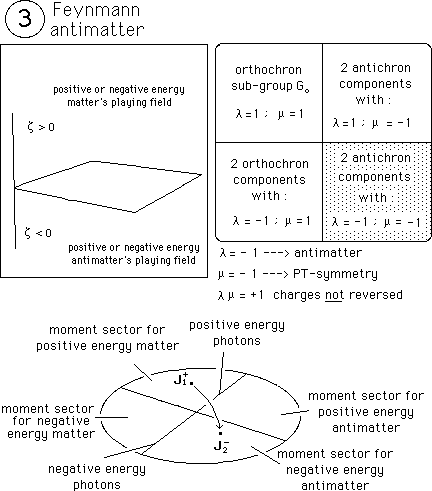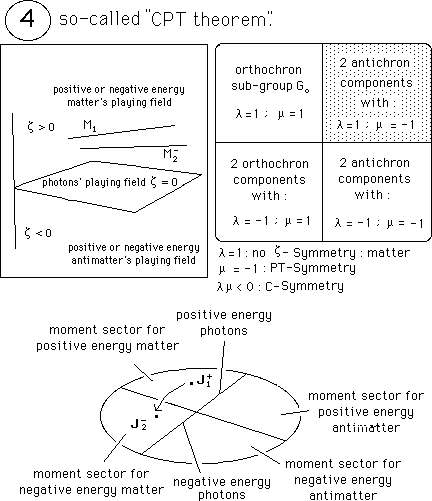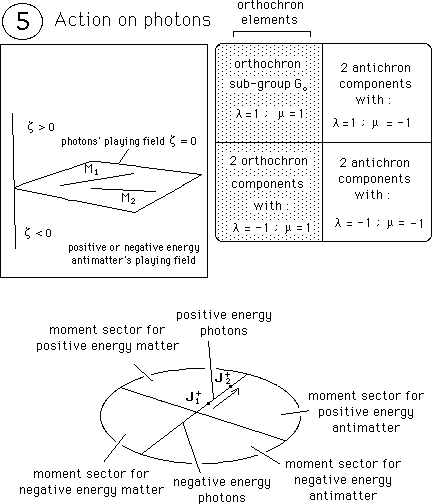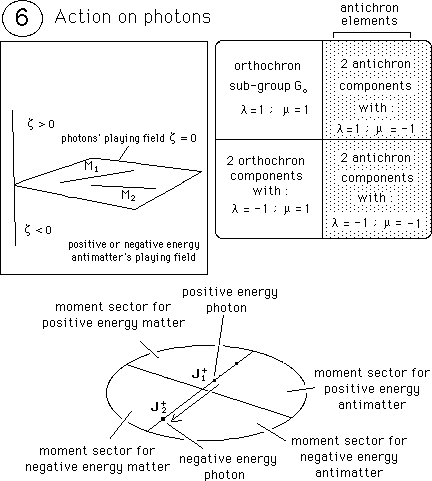...( l = - 1 ) reverses the {z i}. According to our geometric definition this new movement corresponds to antimatter, for it takes place in the second sector of space { z 1 , z 2 , z 3 , z 4 , z 5 , z 6, x, y , z , t }.
( m = - 1 ) gives a PT-symmetry, reverses the signs of ( x, y , z , t )
...But ( l m = + 1 ) keeps the charges unchanged. This is "PT-symmetric antimatter", so that it is a geometric description of antimatter after Feynmann.
...But the group belongs to the antichron sector, so that (coadjoint action) the energy and the mass of the particle is reversed.
...PT-symmetrical object does not identify completely with Dirac's antimatter, for it changes the sign of the mass. If such particles exist, they can produce full annihilation with positive mass particles.

The last elements correspond to the sector ( l=
1 ; m = -1 )
( l = 1 ) --- > the movement is still in the matter's sector :
no z-Symmetry.
( m = -1 ) goes with a PT-symmetry. The particule runs backward in time.
( l = -1 ) : C-Symmetry. The charges are reversed.
...This is CPT-symmetrical
matter, so that it corresponds to a geometrical interpretation of the so-called
"CPT theorem", which asserts that the CPT-symmetric of a particle should be
identical to that particle. That's not true. This movement corresponds to
an antichron movement. The particle goes backward in time, si that (caodjoint
action) its mass and energy become negative .
If CPT-symmetrical particle do exist and if they collide normal particle, complete annihilation occurs.

...The coadjoint action of orthochron components modifies the movement and the moment of the photon, but keep unchanged its energy. See figure 8.


